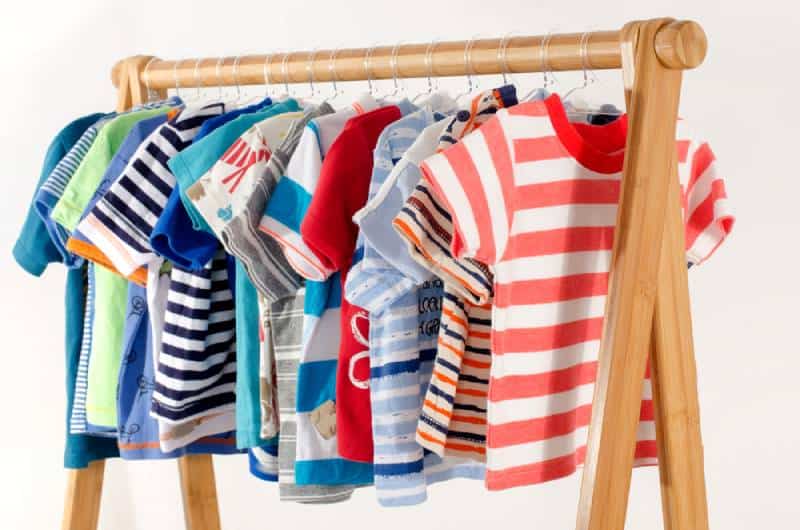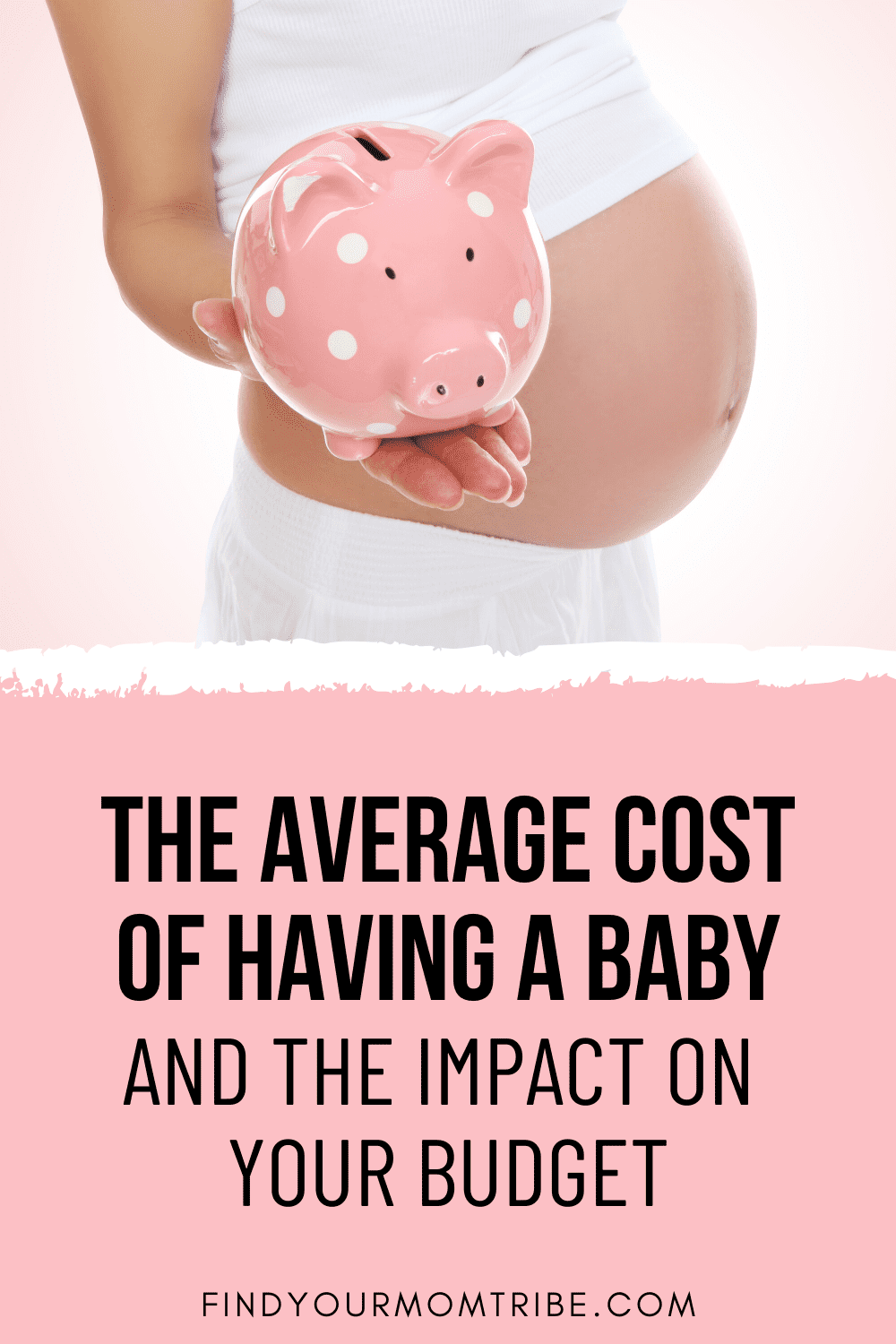While normally we talk about budgeting your income in general, the time has come to pay some special attention to a very specific, and budget-busting, aspect of your life – the average cost of having a baby.
So you’ve finally decided that you want to conceive a child, but are unaware of the potentially egregious expenses attached to that prospect, so you want to do the research into this topic before stepping into the lovely world of parenting.
The fact is, not every household can bear the added weight having a baby applies to the family budget and it should be the first thing one looks at when considering adding another family member to the roster.
“Can we afford another baby?”
While the words sound rather crude, they are as close to the truth as one can be. You don’t want to be raising your child in poor living conditions just because someone thought the expenses wouldn’t be that big.
Raising a child is a big responsibility and the most one can do is plan it out properly.
I’m not saying you should never have a child, but the expenses are much more than just what you spend on them during their childhood years – you have to think about the future financial pressure they’ll start to exert and I’m here to lay it all out for you.
Prenatal period and delivery
The first time you’ll see the decision of having a baby start to impact your budget is during the pregnancy itself.
This is the period where you spend money on medication to make things as easy for you as possible, as well as prenatal care courses to get ready for the arrival of the new baby.
But that’s not all, as after that comes the actual delivery which involves hospital stays and the delivery cost (among other health care costs).
Not to mention having to pay extra for any emergency procedures that have to be taken, like a C-section.

And C-sections can be rather expensive, doubling, or nearly tripling the costs of your average delivery, leading to costs of upwards of $8000 if you don’t have proper health insurance (around $1800 with insurance).
C-sections happen only when necessary, so you’re more than likely to have a vaginal delivery meaning your medical costs shouldn’t rack up.
That said, the hospital bill is still one of the highest costs you’ll have to pay when having a baby.
Post-delivery period
Now that the baby has finally arrived, it’s time to start calculating their living expenses, so to speak.
Your budget may take a hit for the first dozen weeks or so as you begin your maternity leave and have to start the many steps of caring for a baby.
The first expense that will show up on your doorstep is the baby’s health insurance plan, something that’s initially covered by your own plan, but also something that you’ll have to worry about and properly set up during the ‘trial period’.
The other expenses, the ones that you’d expect, are the ones that come next – the baby gear and the actual living expenses for the baby.
From the cheaper stuff you’ll purchase often like food and toiletries to the expensive baby items like strollers, car seats, changing tables, breast pumps, toys, and baby clothes.
All of these can rack up to quite the sizable amount and have price tags that will send your budget into a dangerous downward spiral if you haven’t planned for covering all of the child care expenses that many overlook.
The repetitive costs during the first years
What usually makes the biggest dent in the family budget are the persistent, repetitive costs of baby maintenance and care like food and baby formulas, which end up having an average cost of up to $50-$70 a month depending on the brand you’re purchasing.
Then you have the diapers and the baby wipes, both of which total up to around $110 extra in monthly expenses.
We haven’t even begun and you already have an extra $200 added to your monthly maintenance, the baby bill if you would.
Now, that’s all well and good still, but maternity leave only lasts for so long and you might need to get back to your job to start earning that paycheck that will continue to help cover these expenses that grow by the day.
So, now there’s the cost of daycare to consider.
While yes, you can rely on your parents or friends every so often, you can’t exploit them since they too have lives and things to do, jobs to maintain.
So, you have to resort to daycare centers and the like to keep your baby safe while you’re at work. These centers can cost up to $700-$800 a month which gets us to a grand total of nearly $1000 extra a month.
Ridiculous, isn’t it? Well, these people do have to live off something, and boy does it start getting real expensive real quick.
This step, thankfully, is entirely avoidable if you and your partner are willing to sacrifice a bit of together time for your child by taking shifts opposite of one another.
That way you can alternate work with taking care of your child throughout the day. That is, if you have jobs that allow you such flexibility.

This is arguably the best solution to this part of the monetary problem and should be taken if it won’t impact you too harshly to lose so much quality time with your partner.
The one thing you can’t skip out on is the cost of baby clothes and accessories – all of those onesies, bibs, swaddlers and other blankets.
They’re expensive because they get tagged as ‘baby gear’ and add up to hundreds, if not thousands of dollars to your budget.
It’s a lucrative market and many people simply look at moms as targets to sell high cost products to.
There are plenty of good people out there, though, who are genuinely trying to find new ways to help us, so it isn’t all as negative as I might be making it out to be.
But you should do some research into what fits your baby the best.
That, and you should always be on the lookout for quality products that are also affordable, so you can help reduce the average cost of having a baby as much as you possibly can.
There’s also the costs of regular medical check-ups and any sudden health affairs that have to be covered by insurance and promptly paid for as well, otherwise your wallet is going to get emptied.
And this is something that will remain prevalent throughout the years as sadly, humans are just that – humans – and we’re susceptible to diseases and bruises.
Pre-teen years
The expenses you had earlier haven’t disappeared, they’ve just changed and become a bit more affordable.
You’re still buying your kids food, shoes, and clothes as well as the added amount to the utility bills – the cost varies depending on how fast your child grows or how many articles of clothing they need.
The main debate for parents at this stage of their child’s growth is whether to enroll them in public or private institutions.
If you’re looking to save on money, then public schools are undoubtedly the right choice.
But if you’re someone who values the level of education that your kids get and doesn’t have as tight a purse as many other middle-income families do, then you are free to opt for a private school.
One where they emphasize with your child’s strengths and shore up the areas they’re struggling with.
Now you also have textbooks to consider as well as other school supplies like backpacks, notebooks, pens and pencils – the works.

All of that is going to deliver some upfront costs and a few small maintenance fees in the form of buying new notebooks once the old one is filled up and the like.
Not to mention all of the school trips that your child should attend if possible and if they’re comfortable with it, so they can have an enriching experience and so that they’re not stuck in the same routine day in and day out.
Something to break the monotony, so to speak. Another newly added factor is transportation costs, a.k.a. gas money.
If you’re the one driving your kid to school, chances are you’re using up a lot of money on gas – a luxury for which the price keeps going up, meaning it’ll only start becoming more and more expensive.
If there is a school bus available for the school your child goes to, opt for that over driving them yourself.
That should be a much cheaper option. I wouldn’t recommend public transport just yet, maybe when they hit the double digits of age.
Then there are various extra-curricular activities that should be taken into account.
Some kids might want to take up dancing, football, athletics, or swimming.
Some may prefer to practice guitar or piano, while some might simply be interested in summer camp.
Whatever the case, these costs will also add up, each costing from about $30 to well over $100 depending on the level of activity they’re getting (guitar and things like swimming usually having more of an upfront cost for the gear with a lower maintenance cost).
My personal suggestion is to not try and limit your kids in this period, at least as far as activities are concerned.
While it will be a massive strain on your home budget, this will allow them to explore more about themselves and the things they like, which will end up costing you way less when they start picking colleges and universities later down the line.
That’s because now they’ll be a bit more decisive and self-confident in the choices that they make rather than questioning themselves because they didn’t get to try out everything they wanted to to narrow their choices down.
That said, don’t let them overwhelm themselves by taking on more than they can deal with, as it will only end up having an adverse effect on their mental growth.
Instead, look to cut down on clothing where you can.
Hand-me-downs are always easy enough to come by, whether through garage sales, your older child if you have one, or even by asking some of your friends for theirs if they don’t have a use for them.
That’s a rather common occurrence in my neighborhood at least.
At least diapers are out of the equation, as are pacifiers and the rest of the baby gear.
Speaking of which, if you don’t intend on having another child, you too can sell most of your child’s baby things and get some of that money back to further fund their early life.
It might not be much, but at least it’s something to keep you afloat.
A very important thing to do at this age, or even before you start planning on having a baby in the first place, is to start making a college savings account and slowly trickling money into it.
That’s because the years to come are going to become more expensive as you go through them and it’s best to start early to feel the effects a lot less – college and university education tends to cost an arm and a leg, almost literally.
It’s always nice to know that there is one and, if there is a real emergency, you can always tap into it just if necessary.
Don’t take out too much, though, as you still want there to be a college savings fund when your child gets to that point in their life.
The teen years
As your child passes over the tween threshold and enters the dreaded teenage years, prices just keep ramping up.
These expenses are usually one-offs, though you still have the same expenses you had before in the pre-teen years.
The only difference now is that they’re not kids anymore, they’re teenagers, and teenagers tend to siphon a lot more off.
No longer will your child be sated by the allowance they used to have when they were younger – you’ll probably need to increase it, draining your pockets drier than before.
Plus, high schools tend to be a bit more expensive when it comes to keeping up with the necessary items.

A good strategy to keep the costs down is to sell and upgrade much like the suggestion in the pre-teen section.
All their old clothes that don’t fit anymore can be sold off for a marginal profit as well as any old games, toys, and textbooks they no longer use and don’t feel like keeping.
Another way to save money pops up here as well, since they’ll be able to start finding part-time jobs for themselves to be able to afford something that they want like a new phone or a laptop for school and personal use.
Or you might help them find one. Either way, it’s an option for additional income.
And, now that they’re teens, they’re a bit more self-aware and might be able to contribute in case you need to tighten the budget without making too much of a fuss about it.
But the real costs in this age are all of the events and school trips that continue from the pre-teen years as a recurring expense during their education.
The main culprit always tends to be prom, where renting suits/dresses can cost up to $250 on average, not to mention renting a limo or make-up if they really push for it – though that is an optional expense that can be cut off easily.
Talk it over with your teen first, though, as nothing should be done without their knowledge and input.
This isn’t to say that you’re meant to be a slave to them and that they’re your boss, it’s more the fact that this decision influences their lives a lot more than it does yours and you have to be a bit considerate, even when budget is concerned.
Then, of course, there is the one defining expense of every teenager’s life around their 16th year – the drivers’ license.
Drivers’ ed classes and the whole process in its entirety has an average price of anything from $300 all the way up to $800 depending on which state you’re living in.
And you need to calculate driving insurance into that too, which is also a sizable portion of your funds.
Most of these are edge-case scenarios though and are optional.
Your kid doesn’t have to get a driver’s license the moment they turn 16 (though it does look really good on a resume), they don’t have to splurge their money on outings or flashy prom dresses and the works.
Most of it is avoidable, but is replaced by them potentially remaining unfulfilled. Cut down on some if necessary, but don’t cut down on too much and allow them to grow.
College time
The final stage of where the average cost for having a baby applies as you’re still responsible for them are the early college years.
This is where you’ll have your jaw dropping to the ground at the egregious prices our education system places on higher education. Some reasons are justified, but most are not.
In any case, this is where the college savings account comes into play. It’ll be able to soften that initial blow for you, though it’ll still be quite expensive depending on what your household income is as well as how much you’ve actually managed to save up.
Though fret not, scholarships thankfully do exist and they will probably be able to manage another good portion of that, so that even college ends up being manageable.
That said, most scholarships require your child to be an enticing intellectual or athletic prospect for them to be accepted, which means maintaining a high GPA or being an exceptional athlete in their field.
With a bit of luck and a good amount of proper parenting, your child might have just had such aspirations and managed to excel in either of these two ways, netting you a ticket to absolving these costs and successfully enrolling your child in their college/university of choice.

There are still some expenses to be paid for your now young adult, but they’re minor apart from the college tuitions and the like or the odd emergency.
You’re still their parent after all, you’re not going to ditch them just because people stereotype a child’s independence as such.
Now they’re free to live their own life the way they want to and your own budget becomes a lot less constrained once they finally graduate, giving you a level of newfound freedom and a great dose of satisfaction after seeing what your son/daughter has become.
If anything, now it’s potentially their turn to start calculating the average cost of having a baby instead of you and you can be there to advise them and take on a slightly more passive role in all that.
With that you’re finally absolved of this financial part of your parental duty and you get to enjoy seeing the fruits of your labor.
Congratulations, you’ve made it.
There is another cost that I would like to mention though…
The Mental Strain
The average cost of having a baby isn’t just the monetary expenses, there is another factor to consider as well and that’s the stress that comes with taking care of a child.
It’s not simple by any stretch of the imagination and while babies bring much joy and happiness into our lives, dealing with their needs can sometimes be a nightmare when we find ourselves overwhelmed at times.
You’ll find yourself in great peril from time to time, periods where it will just be too much and periods where some people may even break.
While this may sound overblown, the truth is that having to deal with so much added pressure all at once is rather taxing, especially for the average Joe who comes from a middle-income household who hasn’t planned all of the childcare costs out in time.
Remember, it’s not just about the baby, it’s about you too. If you aren’t in your healthiest mental state, then the baby’s quality of life worsens as you’re one of their parents and are the person they’ll be spending most of their childhood around.

Take a step back, take a deep breath, and relax. All of this might seem like a mountain of a task, and it most certainly is.
It’s a sizable hurdle, but it’s not an uncrossable one, as long as you don’t quit.
Power through it by realizing that you’re not alone here and that asking for advice from professionals or people with experience can be a great help with getting your head back in the game.
The most important of these is an actual therapist or psychiatrist to help put your mental state back in order before something bad happens.
And the most important thing is to not keep it bottled up. If you’re feeling stressed about being a parent, share your woes with your friends or online.
Yes, it’s a rewarding task, but it most certainly isn’t an easy one.
The Bottom Line
The average cost of having a baby in the United States comes out to being quite a lot for the average household income and it requires a lot of careful planning and a few tricks to keep it manageable.
That said, if you see yourself being unable to cover the costs during your initial planning, or simply find it too much effort and something you aren’t prepared to deal with, then don’t go through with it.
It’s the smart thing to do. Yes, this is a baby blog for moms, but one should know when one is ready for a baby or not and just going into it head-first is a foolhardy move.
You’re being a better mom by waiting for the right time, a time where your savings accounts are capable of covering all the necessary baby costs throughout their lives and the period where you’re legally responsible for them.
So often I hear about abandoned children or children in such poor living conditions because the parents made the mistake of bringing them into this world without any forward thinking and pre-planning, leading to what is undoubtedly a more miserable life than what they could’ve had with a bit of premeditated thinking and patience.
Not everyone is capable of having a child and taking care of it in this day and age with our economy growing ever more demanding by the day and parenthood slowly starting to turn into an obscene luxury instead of a choice that can be properly supported.
To me, that’s a sad fact because everyone should be able to experience the joy of parenthood… but, sadly, some are unable to.
Like this post? Please share or pin it for later. You can also stay in the loop and follow us on Facebook, Instagram or Pinterest.

This post contains affiliate links. Please see our full disclosure for more info.

